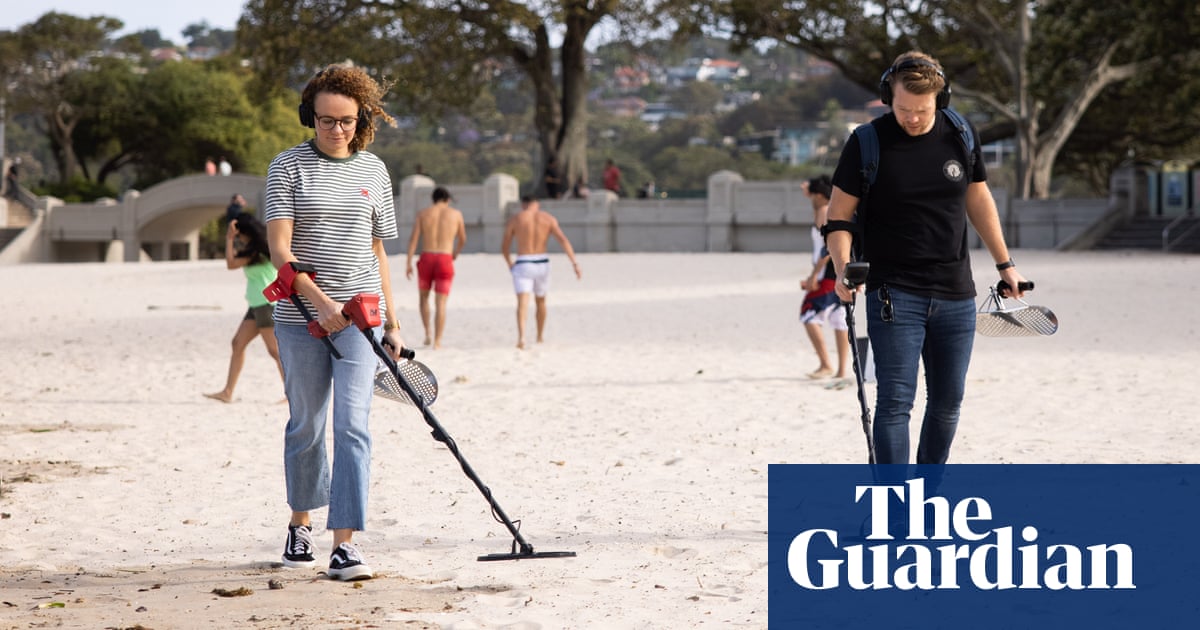
I’m looking at a coffee that’s thick, cold and the deep brown colour of 90% dark chocolate. It tastes like coffee but, weirdly, without any bitterness. It is the only coffee I’ve had that was made by blasting ground coffee beans with sound. They call it ultrasonic coffee.
It wasn’t made by a barista but by two chemical engineers in a lab at the University of New South Wales in Sydney. Dr Francisco Trujillo, a senior lecturer in the school of chemical engineering, and the PhD student Nikunj Naliyadhara explain the coffee they’re about to make is sonicated, or hit with ultrasonic waves. I have no idea what that means. But they grind coffee beans, pack them into a portafilter basket (the handled device you’ve probably seen your barista twist and untwist) and connect the portafilter to a Breville espresso machine. And just like your barista, they press some buttons. The machine makes soft whirring sounds.
Trujillo explains what’s happening inside the machine. First, the coffee is infused in water for five seconds. Then, as the machine releases room-temperature water on to the coffee grinds a transducer – a device connected to the portafilter – pushes sound waves through the basket and into the coffee grinds. He describes an opera singer’s voice making a glass vibrate so intensely it breaks.
Here, the metallic basket of the portafilter and the coffee grinds are vibrating but they don’t break; instead, the sound waves cause huge fluctuations in pressure.
In the regular coffee-making process, water extracts flavour from the outside of the coffee grounds (the hotter the water, the faster this happens). If you leave the coffee in for long enough you might extract some of the flavours from the centre of the coffee grounds but by that time you’ll have picked up some unfavourable flavours too – what baristas call overextraction.
Sign up for the fun stuff with our rundown of must-reads, pop culture and tips for the weekend, every Saturday morning
The ultrasonic method sends lots of tiny bubbles into the water and coffee. When they implode, they make mini shockwaves that can pierce the inside of the coffee grinds in a phenomenon called acoustic cavitation. According to Trujillo’s 2020 research, this method extracts more flavour and caffeine from the coffee.
Two minutes later, the ultrasonic coffee drips from the portafilter, but the liquid is much darker than the caramel crema of an espresso. Trujillo hands me a paper cup of thick brown liquid.
It’s extraordinarily powerful – aromatic, acidic, rich and viscous. But unlike an espresso, it’s not bitter or harsh. It’s also not, as Trujillo’s latest paper says, a cold brew. Cold brew is made by steeping coffee grounds in water for hours, and tastes subtle, floral and lacking in both acidity and bitterness – the coffee equivalent of a night of poetry and incense. This is like drinking a music festival.
I turn to Benjamin Johnson, the co-owner of Solstice cafe in Summer Hill, who I’ve brought along for the tasting. I want to give him “what the hell are we drinking?” eyes but he’s busy talking coffee tech with the scientists. He later tells Trujillo it’s like an espresso made with a low brewing temperature – “better than any cold brew I’ve ever had.”
We end up drinking three more samples, all made from different beans. They taste distinct – it’s not the ultrasonic process we’re tasting, but a more intense version of whatever is in the bean. By the end I find myself agreeing with Trujillo’s description of the coffee: it has the “acidity and fruitiness of a filter coffee, with the body and the mouthfeel of an espresso but with less bitterness and a clean finish”. Having experienced years of people giving me things to drink promising “this is like nothing you’ve tried before”, I was happy for it to ring true for once.












